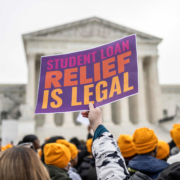The U.S. Department of Education’s role is critical for consumers
December 9, 2024
Media contact: National Consumers League – Lisa McDonald, lisam@nclnet.org, 202-207-2829
Washington, DC – The National Consumers League (NCL) rejects proposals to abolish the U.S. Department of Education (ED) and urges Members of Congress to strengthen the agency and its critically important role for consumers.
ED provides irreplaceable services for our public schools, alongside programs administered by other agencies like Head Start at the Department of Health and Human Services and the National School Lunch program at the Department of Agriculture. Despite making up only 3% of the federal budget, ED plays an outsized role in supporting K-12 and college education. Many underserved schools across the nation rely on ED’s Title I funding to continue operating a full range of educational and care services.
The US has long recognized a need for a limited but important federal role ineducation. Indeed, the original Department of Education was created in 1867 to collect information on schools and teaching that would help the States establish effective school systems. ED has evolved and changed with the times, but this early emphasis on getting vital information to teachers and education policymakers continues into the present.
Moreover, ED supports the essential role played by our public schools across America, schools that teach reading, writing, math and science, and are free to all students. The public school system represents the best of American democracy, fostering civic engagement and opportunity for all.
ED also pursues its twin goals of access and excellence through programs that cover every area of education and range from preschool education through postdoctoral research: including civil rights protections, Title IX rights, and over $150 billion in new and consolidated loans annually. Without these loans, millions of students would not have access to higher education, so ED plays a truly essential consumer support role.
Finally, while ED’s programs and responsibilities have grown substantially over the years, the Department has the smallest staff of the 15 Cabinet agencies and has suffered funding cuts from Congress.
NCL calls on leaders across the political spectrum to reject proposals that would jeopardize the future of our nation’s children and instead focus on improving, refining, and supporting ED’s many positive contributions. NCL continues to advocate for policies to minimize the costs associated with seeking higher education, including legislation to bring the US in line with other developed nations by making college affordable for all.
Further reading
- NCL applauds Biden Administration’s new actions to minimize education costs
- NCL urges ED to erase student debt, improve permanent pathways to cancellation
- NCL applauds President Biden for protecting student borrowers and vetoing attempt to end critical programs
###
About the National Consumers League (NCL)
The National Consumers League, founded in 1899, is America’s pioneer consumer organization. Our mission is to protect and promote social and economic justice for consumers and workers in the United States and abroad. For more information, visit www.nclnet.org.
















